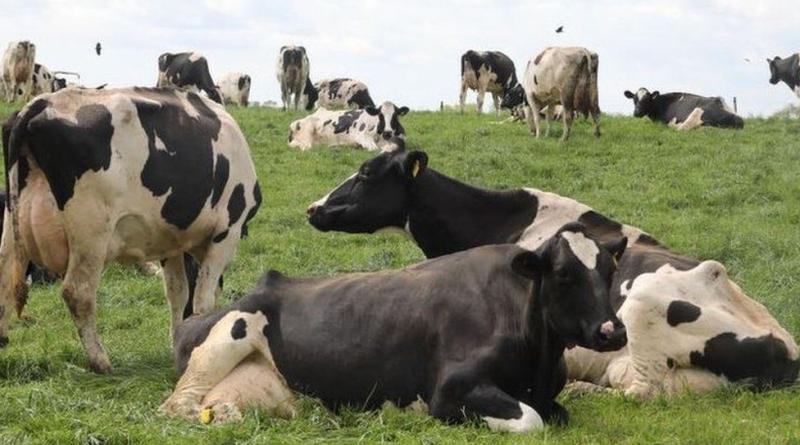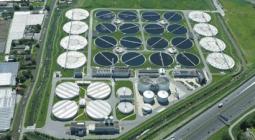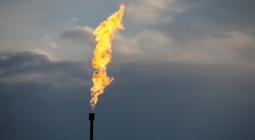Biomethane added to NI gas supply network for first time

Biomethane, a more environmentally-friendly gas product, has been successfully introduced into Northern Ireland's gas supply network for the first time.
The product can be used as a direct replacement for traditional natural gas.
It comes from agricultural manure, chicken litter, silage and food waste.
In the first instance the biomethane used in Northern Ireland will come from food waste.
There are ambitions to meet much of Northern Ireland's gas demand with biomethane by 2030.
Agriculture is the biggest contributor of greenhouse gas emissions in Northern Ireland, largely due to livestock.
Researchers at Queen's University Belfast found there was potential to meet as much as 80% of Northern Ireland's gas demand using biomethane.
But scientists have warned that, while using manure to generate energy is a solution, it cannot be used as an excuse to further intensify a sector which already produces food for five times its population.
More affordable energy?
Northern Ireland has to import its fossil fuels, leaving the region vulnerable to shocks in the international supply system, like the soaring prices of oil and gas after the invasion of Ukraine by Russia.
But a local supply of biomethane would help to insulate from those shocks.
It could also keep energy more affordable, as gas is used to generate electricity.
Evolve, which runs the gas network in the west of Northern Ireland, has worked in partnership with Granville Eco Park in County Tyrone for the biomethane project.
The company recycles biodegradable waste and has been using biomethane at its Dungannon site since 2014.
Describing it as a "monumental day", the firm's director, David Butler, said the introduction of biomethane to the network grid marked "the start of a journey to fully decarbonise our entire network by 2030".
David McKee from Bio Capital Group which runs Granville Eco Park said the development would "go a significant way" towards meeting targets in the Energy Strategy and the Climate Change Act.
Is biomethane a green fuel?
While biomethane is not entirely greenhouse gas-free, it does not contribute to global warming.
This is because, even though it emits carbon when it is burned, it is carbon which would have been emitted anyway if the organic matter had been left to decay naturally.
The process of making biomethane prevents the release of damaging methane into the atmosphere by capturing the gas in a tank during decomposition.
This gas is then treated, making it suitable for use in the grid network.
How is biomethane used?
With large surpluses of manure available from which the gas is made, utility regulator John French welcomed the security of supply the locally-generated fuel would create.
He said the announcement underscored "the commitment to offering consumers access to a decarbonised energy source, all while minimising the necessity for substantial costs and upheaval".
Renewable energy in the form of wind and solar-generated power supplied just over half of what was used in Northern Ireland last year.
But with some industries such as manufacturing requiring heat which only gas can provide, biomethane is set to play a role in meeting that need while at the same time reducing harmful emissions.
Biomethane can be used in all the ways natural gas is currently used.
But the infrastructure to create it in the volumes Northern Ireland would need to fully replace natural gas does not exist yet.
To meet demand, the industry is calling for a local biomethane action plan.
This would include a regional network of larger anaerobic digestion plants - which convert organic waste into biomethane - rather than lots of small-scale ones.
Twenty-four anaerobic digester plants around Northern Ireland have registered their interest in injecting into the network.
The gas network operators in Northern Ireland are expected to launch a formal request for information by the end of the year.
Analysis: A hugely significant moment
This takes the manure surplus that is an environmental problem for Northern Ireland and turns it into a potential solution.
It is undoubtedly a hugely significant moment in taking the theory of decarbonising energy here and making it reality.
It creates local security of supply and demonstrates what is possible.
But it is part of a wider picture.
Investment in infrastructure is needed, and also safeguards against simply finding ways to maintain business as usual or even intensifying emissions from agriculture, our already-most polluting sector.
PHOTO: GETTY IMAGES





